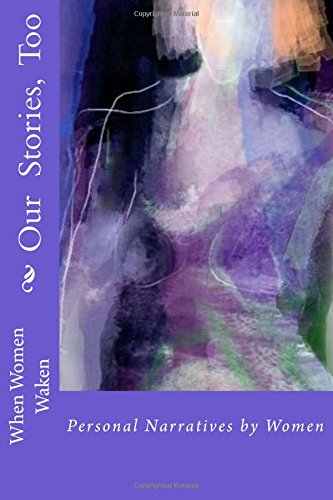This piece appeared under another title in India Currents magazine last Fall. I’m sharing it here, given that recent geo-political developments sadly keep it as relevant as ever.
Apologies for being AWOL. Daily life currently demands huge parts of me and the best I can do is ride the wave.
~
On a crisp September morning, a dozen years ago, I emerged into the sunshine feeling happy and ravenous. Having finished an intense summer at Syracuse University’s famed Newhouse School of Communications, I was easing into the Fall semester, thoroughly enjoying the thrill of learning. Breakfast was on my mind as I walked over to the Schine student center and waited in line for an omelet. Maybe I’ll add hash browns and toast, I was thinking, when an undergraduate student interrupted my thoughts. “What are they showing on those screens,” she asked, and gestured toward two pull-down panels showing planes and buildings and smoke. “Probably a movie,” I shrugged and took my tray over to a table to watch. That omelet, those potatoes, and the carefully buttered toast grew cold and unwanted as I watched with dilated pupils and mouth agape a moment that changed the course of history.
Of course, when events occur that change lives, nations and entire lexicons, you hardly hear the warning bells right away. The enormity of shift that will follow isn’t always estimated accurately. Especially when you are a recently-turned 23-year-old who landed in the country with two bulging suitcases and a crock of naiveté. What I remember of the day is the not-so-flattering peach top I had worn with my jeans, a leaf pattern around the neckline. What I remember is running through the Bird library, to tell a family friend who had already heard. I remember being inundated with calls from folks in India, because nobody knew the difference between New York the city and the state—or maybe they didn’t care. I remember being in the World Trade Center, a mere three weeks earlier. I remember a picture taken in its foreground, young 20-somethings leaning into each other, laughing into the camera, unaware that this would be the last time we would see the twin towers standing.
You don’t need me to tell you that America changed that day, twelve years ago. Human anguish, horror and anger hit all life within a 1000-mile radius like a ton of bricks. Rhetoric and war and a decade long manhunt were only the most high-profile casualties of this emotional earthquake that equally crumbled bricks and the notions of security, terror and insularity. America darkened, its economy crashed, and against the backdrop of the nation’s struggles, my own newly-minted life in the country rode the crests and troughs of immigrant life. Industries creaked to a crawl, jobs grew scarce, and the then-President’s reaction to this atrocity bubbled over and scorched lands and people. Relatively cocooned in my student existence, grad school provided a buffer from the ugly realities of the next year. But there comes a time when the door is thrown open and you finally must walk.
The graduating class of 2002 walked out into a drastically changed reality—one of a tanked economy, financial uncertainty, and no warm welcome from a suddenly hostile America. Engineering students, fattened on stories of bulky sign-on bonuses and Silicon Valley embraces, felt like dethroned monarchs. Ph.D. candidates desperately delayed graduation for the next few years. Young people from India who never had to lift a finger in their lives were now grunting it out in food courts, temp jobs, and limited projects, the golden H1-B nowhere in sight. Many returned to their home countries. The ones with loans looked on in despair as ends simply refused to meet. America’s manpower loss, a small casualty in the face of the larger horror, was India and China’s gain.
Two years later, another war was announced. And I’ve always wondered how many rallied against it only for the havoc it would further wreak on their lives. Even as I traveled and worked and plodded along my own 20s journey of self-discovery, relationships and independent living, the rumble of 9/11 was never too far away. Millions before us were fed narratives of the American Dream, but we, those who arrived in the year of 9/11, saw the country at her naked worst—her breath craggy, her vision blurred, refracting her trauma on other innocents of the world.
I sometimes wonder how it must have felt, being part of the wave before that date seared in collective memory. To have known the tech boom, the easy green cards, the ubergenerous land of plenty. A country preceding brown skin hostility. A time before I had to say my name, spell it out, and quickly share I wasn’t Muslim even to my fellow Indians, because my horns, you see, were simply waiting to burst from my skull if I happened to be one.
A dozen years later, as I write this from my serene couch in the heart of Silicon Valley, I marvel at how we survived—both America and I, on our respective but not discrete journeys. That we held on through the harsh times with resilience I didn’t know existed. That it is this country, and not the land of my birth, that has taken me on the ride of a lifetime—one I know is far from over yet.
Maybe we choose some of our difficulties. Or perhaps they choose us. We come out on the other side with battle wounds and weary spirits, but I live with the faith that I survived—and the hope that America, strange bedfellow in a stranger journey, will as well.
Tags: 9/11, America, heartbreak, history, immigrant, journeys, life, memories, narratives, New York, pain, personal, September 11, terrorism, tragedy, United States of America, war, World Trade Center















Vox populi